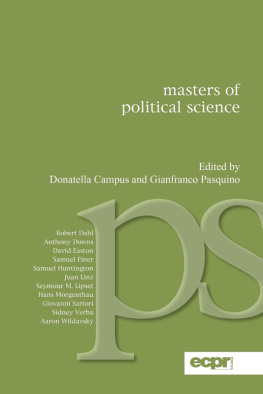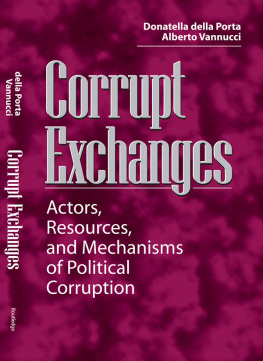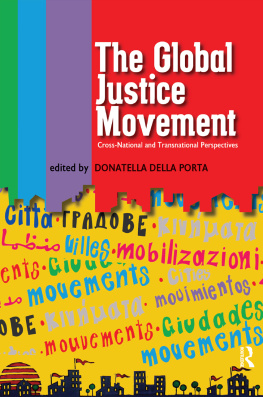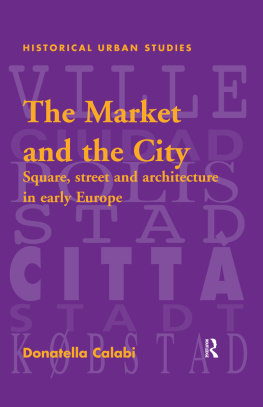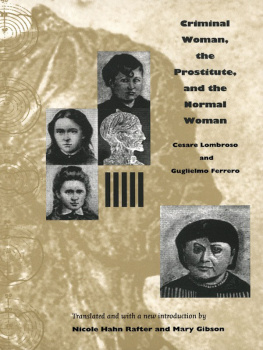Donatella Di Cesare - Immunodemocracy Capitalist Asphyxia
Here you can read online Donatella Di Cesare - Immunodemocracy Capitalist Asphyxia full text of the book (entire story) in english for free. Download pdf and epub, get meaning, cover and reviews about this ebook. year: 2021, publisher: MIT Press, genre: Religion. Description of the work, (preface) as well as reviews are available. Best literature library LitArk.com created for fans of good reading and offers a wide selection of genres:
Romance novel
Science fiction
Adventure
Detective
Science
History
Home and family
Prose
Art
Politics
Computer
Non-fiction
Religion
Business
Children
Humor
Choose a favorite category and find really read worthwhile books. Enjoy immersion in the world of imagination, feel the emotions of the characters or learn something new for yourself, make an fascinating discovery.

- Book:Immunodemocracy Capitalist Asphyxia
- Author:
- Publisher:MIT Press
- Genre:
- Year:2021
- Rating:5 / 5
- Favourites:Add to favourites
- Your mark:
- 100
- 1
- 2
- 3
- 4
- 5
Immunodemocracy Capitalist Asphyxia: summary, description and annotation
We offer to read an annotation, description, summary or preface (depends on what the author of the book "Immunodemocracy Capitalist Asphyxia" wrote himself). If you haven't found the necessary information about the book — write in the comments, we will try to find it.
Immunodemocracy Capitalist Asphyxia — read online for free the complete book (whole text) full work
Below is the text of the book, divided by pages. System saving the place of the last page read, allows you to conveniently read the book "Immunodemocracy Capitalist Asphyxia" online for free, without having to search again every time where you left off. Put a bookmark, and you can go to the page where you finished reading at any time.
Font size:
Interval:
Bookmark:

SEMIOTEXT(E) INTERVENTION SERIES
2020 Bollati Boringhieri editore, Torino. Originally published as Virus sovrano? Lasfissia capitalistica by Donatella Di Cesare.
All rights reserved. No part of this book may be reproduced, stored in a retrieval system, or transmitted by any means, electronic, mechanical, photocopying, recording, or otherwise, without prior permission of the publisher.
Published by Semiotext(e)
PO BOX 629, South Pasadena, CA 91031
www.semiotexte.com
Design: Hedi El Kholti
ISBN: 978-1-63590-148-1
Distributed by the MIT Press, Cambridge, Mass.,
and London, England
d_r0
THE COMING ILLS
It had already been in the air for some time. Many pressed on with their lives, preferring to ignore itwhether out of incredulity, suspicions they harbored, or mere resignation. But then everything was shut downlike when a well-worn mechanism that has been whirring for too long finally grinds to a halt. A spectral silence descended, pierced by the high-pitched wailing of the sirens.
Despite the sunny colors that tinted the streets of Rome in spring of 2020, everything was pervaded by a gloomy stupor. The tables disappeared from outside the bars and the students voices vanished, too. Half-empty buses raced down roads that had now fallen all but silentdiscordant notes, and a trace of the febrile world that had gone before.
From one window to the next, everyone peered at their neighbors. Down on the pavement, two acquaintances would head toward each other as if driven by some spontaneous impetus. But then the greeting would turn into a pained gesture, advising against ita request for the other to keep their distance.
After centuries of history, the eternal city was holding its breath, in a stunned apnea, an anguished wait.
This epochal event marks a watershed. It has already changed the twenty-first centuryand even our way of seeing it. Amidst the ambient disorientation and disconcertment, many have repeated one same word: unprecedented. This label is quite rightly applied to the global pandemic unleashed by the coronavirus. It is well-known that an event is never a unicum, if only because it takes up a place within the plot of history. Yet in this case, comparisons with past happeningseven recent onesare jarring, discordant. The twentieth century suddenly seems to have become remote, like it never had been before. Hence why anyone who uses twentieth-century lenses to decipher what's going on risks quickly running into trouble.
One might easily think back to a shock closer to our own time, to 9/11. The comparison has been made before. The new millennium began in 2001 with the collapse of the Twin Towers, a terrorist act followed live around the world. Yet there are glaring differences with today's situation. Even insofar as 9/11 was the first global eventand for many it really was a shocking tragedyit was nonetheless viewed from afar, through the filter of the TV screen. Ethical questions were raised over other people's pain and the much-spectacularized images from that day; there were long debates on the political questions raised by the war on terror and the incipient state of emergency. Yet the towers collapse did not really derail the onward march of history, the succession of decades from the postwar period to today. For its onward march remained dominated by confidence in progressand destined to ever-greater wellbeing.
Invisible, impalpable, ethereal, almost abstract, the coronavirus attacks our bodies. We are no longer just spectatorsrather, we are the victims. No one can save themselves. The attack has taken hold in the air itself. The virus slyly targets the respiratory system, taking the breath of life away and bringing a horrible death. It is the virus of asphyxia.
The coming ill is a murderous biological virus, a catastrophic germ. But this time, it isn't a metaphor. And what gets ill is the physical bodythe exhausted body of humanity, the fatigued nervous organism. For years already, it has been subjected to an intolerable tension, to an extreme agitation, to the point of apnea. Perhaps it is no accident that the virus proliferates in the respiratory tracts, through which the breath of life passes. The body is torn away from a life running at an accelerated pace. It can no longer keep up. It gives in. It stops.
Is this the dreaded accident of the future? Any diagnosis on this score would be too hasty. But it is hard to believe that this is just a misfortune, a setback, a peripheral episodeand not rather more of a fatal event, ripping through the heart of the system. This is not just a crisis, but a slowmotion catastrophe. The virus has stopped the mechanism from functioning. What we are seeing, here, is a planetary convulsion, the spasm produced by a virulent fever. Acceleration as an end unto itself has inexorably reached the point of inertia. This is a tetanization of the world.
Everything seems to come to a halt, in a bitter contraction, a chain reaction, a viral effect. This is an internal malfunction, an unforeseen breakdownalthough it had in fact been foreseeable for some time! The cogs are running on empty. One can almost hear the dissonance of the gears no longer working in harmony. Just as it is impossible to decipher the secret order in the depths of the catastrophe, it is difficult to say what this enigmatic suspension really means. Perhaps the virus is a final, dramatic alarm sign? Or perhaps our vital resistance is again being tested, before the ultimate collapse arrives?
The coronavirus has triggered an involutionand not a revolution, as some imagined. This is not to deny that this unexpected halt may also provide a pause for reflection, an interval before a fresh beginning. But it is clear that this is an irreversible development.
The desire for change which has been building up over recent years is impossible to ignore. It stems from a perverse, obsolete, unjust economic systema system that produces hunger and social inequality, war and terror, worldwide climate collapse and the exhaustion of resources. But now the world is being shaken by a virus. This is not the event that was expected to pull the emergency brake on history, faced with the incessant storm that swirls over the ruins of progress.
The unforeseen virus has suspended the inevitable continuity of the always-the-same. It has interrupted a growth that had become an uncontrollable, measureless excrescence without end. And any crisis always contains the possibility of redemption. So, will the alarm be heeded? Will this violent pandemic also provide the opportunity for change? The coronavirus has torn bodies away from the whirring cogs of the economy. It is a tremendously deadly force, but also a vital one. For the first time, the crisis is extra-systemic; yet, it cannot be assumed that capital will prove unable to profit from this. If nothing will be as it was before, it is also possible that everything will be thrown into the most irrecoverable disrepair. The brake has been pulled alreadywhat comes next is up to us.
BETWEEN CALCULATIONS AND PROGNOSIS: ON THE END OF THE WORLD
It seems that the epidemic was not, in fact, all that unforeseeable. Better, over the last five years there had been repeated warnings. And here I am not speaking of fiction or eschatological visions. Already in 2017, the WHO (World Health Organization) had warned that a pandemic was imminentit was just a matter of time. This was no abstract hypothesis. In September of 2019, a team at the Global Preparedness Monitoring Board, made up of experts from the WHO and the World Bank, reported, The threat of a pandemic spreading around the globe is a real one. A quick-moving pathogen has the potential to kill tens of millions of people, disrupt economies, and destabilize national security.
Font size:
Interval:
Bookmark:
Similar books «Immunodemocracy Capitalist Asphyxia»
Look at similar books to Immunodemocracy Capitalist Asphyxia. We have selected literature similar in name and meaning in the hope of providing readers with more options to find new, interesting, not yet read works.
Discussion, reviews of the book Immunodemocracy Capitalist Asphyxia and just readers' own opinions. Leave your comments, write what you think about the work, its meaning or the main characters. Specify what exactly you liked and what you didn't like, and why you think so.



